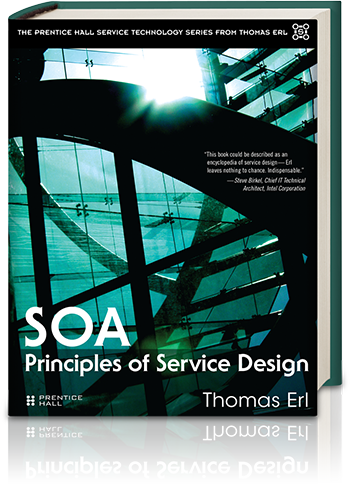About this Book
The key to succeeding with service-oriented architecture (SOA) is in comprehending the meaning and significance of its most fundamental building block: the service. It is through an understanding of service design that truly “service-oriented” solution logic can be created in support of achieving the strategic goals associated with SOA and service-oriented computing.
Formally endorsed by senior members of Intel, Microsoft, Oracle, IBM, BEA, Sun, Intel, HP, and SAP, this acclaimed book provides a thorough exploration of service engineering as it guides you through a comprehensive, insightful, and visually rich exploration of the service-orientation design paradigm, revealing exactly how services should and should not be designed for real-world SOA.
This book’s coverage includes:
- Over 240 full-color illustrations
- A concise introduction to SOA and service-oriented computing concepts and benefits
- A thorough exploration of the service-orientation design paradigm as represented by eight specific design principles
- A comparison of service-oriented and object-oriented concepts and principles and a clear definition of what qualifies as “service-oriented” logic
- Detailed coverage of four different forms of service-related design granularity
- An exhaustive examination of service contracts, with an emphasis on standardization, abstraction, and the utilization of WS-Policy, XML Schema, and WSDL definitions
- A comprehensive study of various forms of service-related coupling with an emphasis on the requirements to attaining a suitable level of loose coupling.
- An inside look into how commercial design approaches are incorporated to achieve truly agnostic and reusable service logic
- Techniques for maximizing service reliability, scalability, and performance by instilling high levels of autonomy and emphasizing stateless design
- Approaches for positioning services as highly discoverable and interpretable enterprise resources
- Unprecedented coverage of how to design services for participation in complex compositions
- The definition of concrete links between each design principle and the strategic goals and benefits of SOA and service-oriented computing
- Numerous cross-references to key design patterns documented separately in SOA: Design Patterns
The goal of this book is to help you attain a solid understanding of what constitutes contemporary SOA along with step-by-step guidance for realizing its successful implementation.
Table of Contents:
Chapter 1: Introduction
Chapter 2: Case Study
Part I: Fundamentals
Chapter 3: Service-Oriented Computing and SOA
Chapter 4: Service-Orientation
Chapter 5: Understanding Design Principles
Part II: Design Principles
Chapter 6: Service Contracts (Standardization and Design)
Chapter 7: Service Coupling (Intra-Service and Consumer Dependencies)
Chapter 8: Service Abstraction (Information Hiding and Meta Abstraction Types)
Chapter 9: Service Reusability (Commercial and Agnostic Design)
Chapter 10: Service Autonomy (Processing Boundaries and Control)
Chapter 11: Service Statelessness (State Deferral and Stateless Design)
Chapter 12: Service Discoverability (Interpretability and Communication)
Chapter 13: Service Composability (Composition Member Design and Complex Compositions)
Part III: Supplemental
Chapter 14: Service-Orientation and Object-Orientation: A Comparison of Principles and Concepts
Chapter 15: Supporting Practices
Chapter 16: Mapping Principles to Strategic Goals
Part IV: Appendices
Appendix A: Case Study Conclusion
Appendix B: Process Descriptions
Appendix C: Principles and Patterns Cross-Reference


